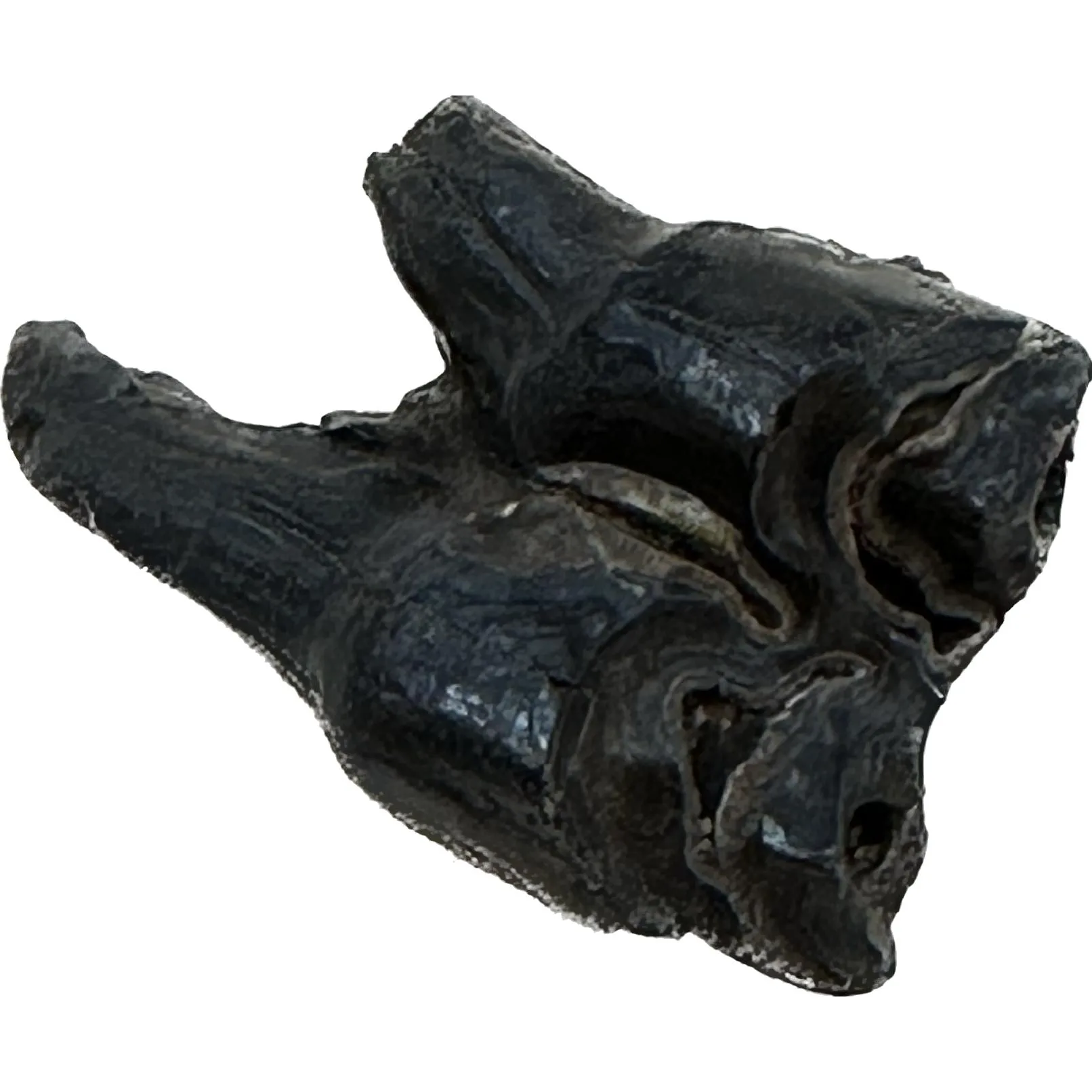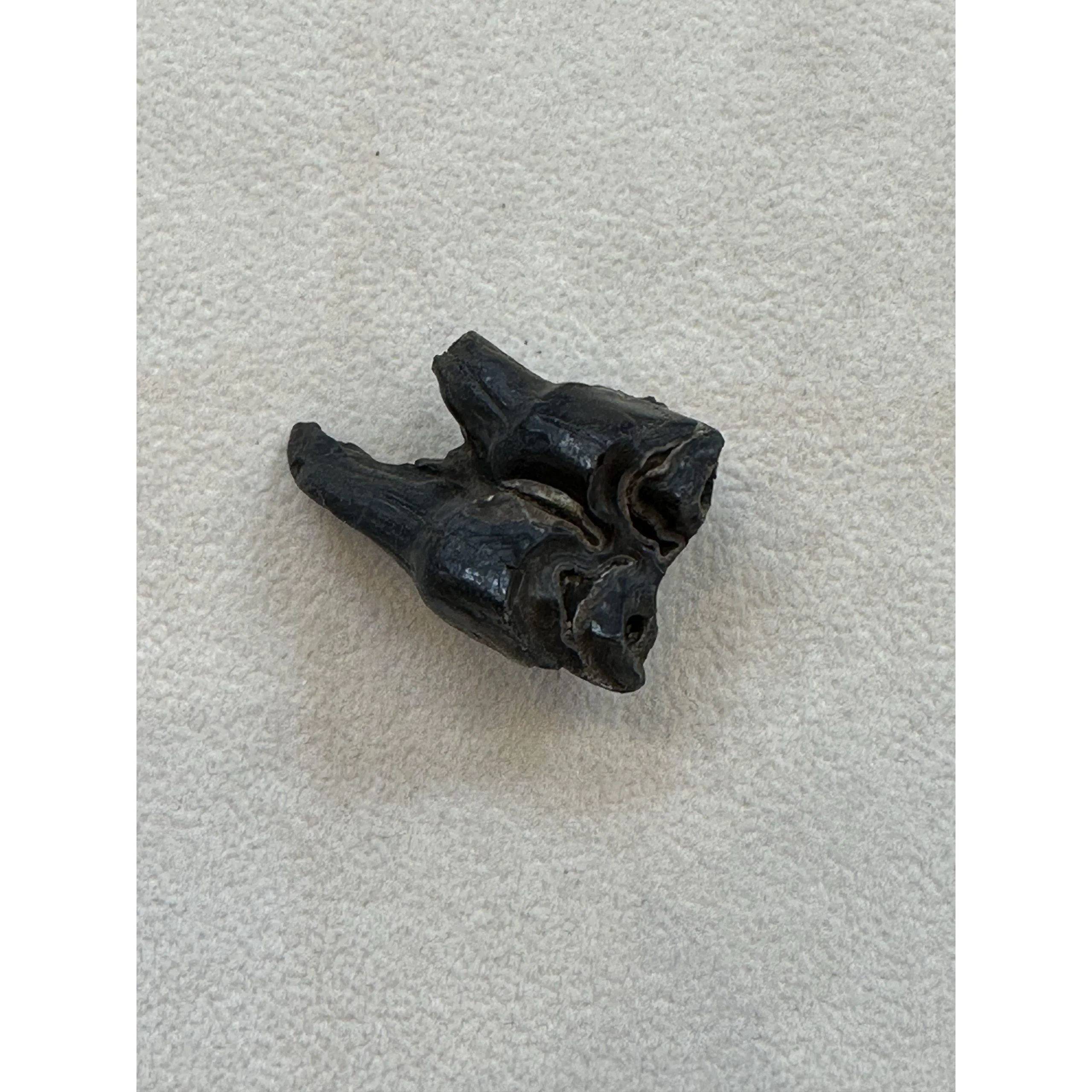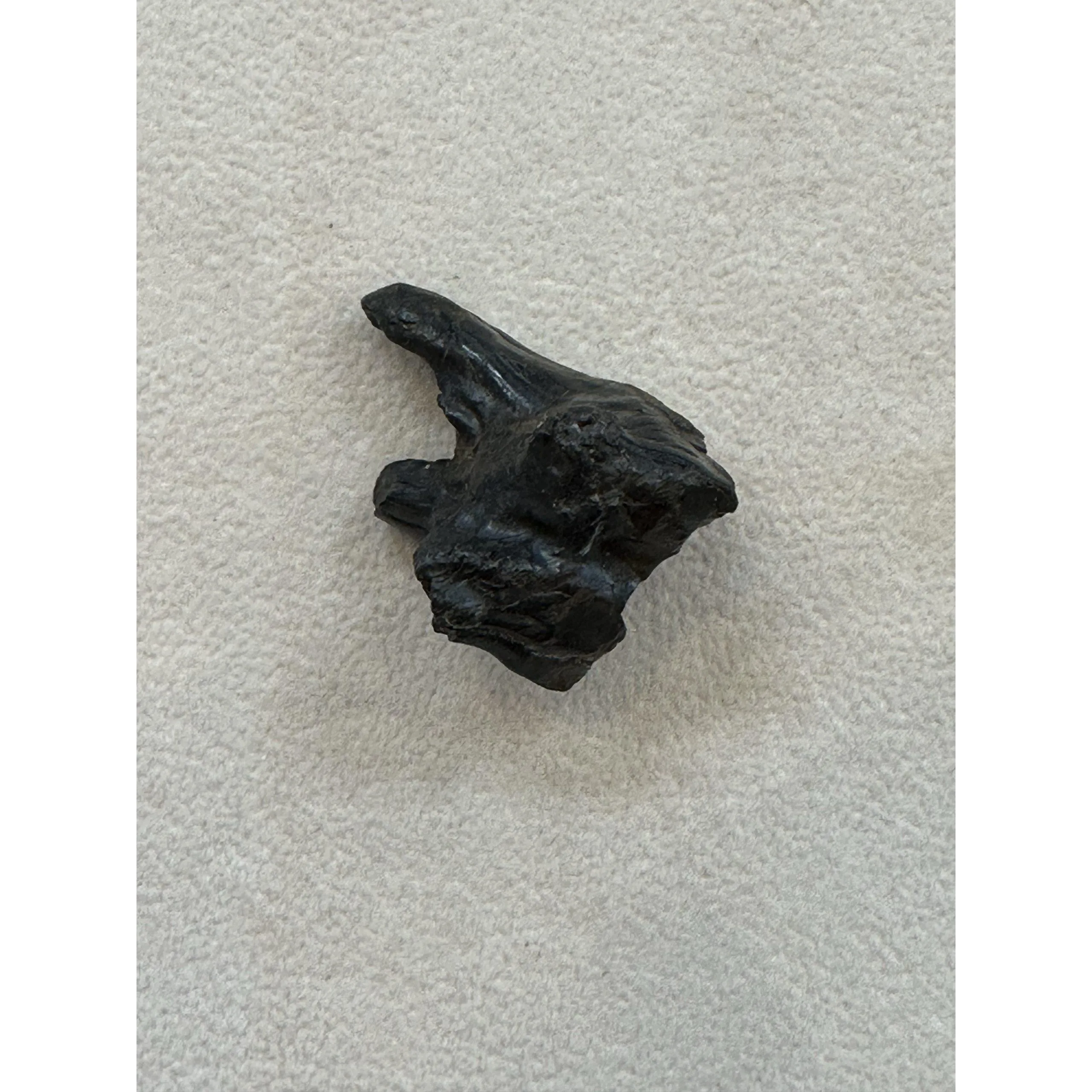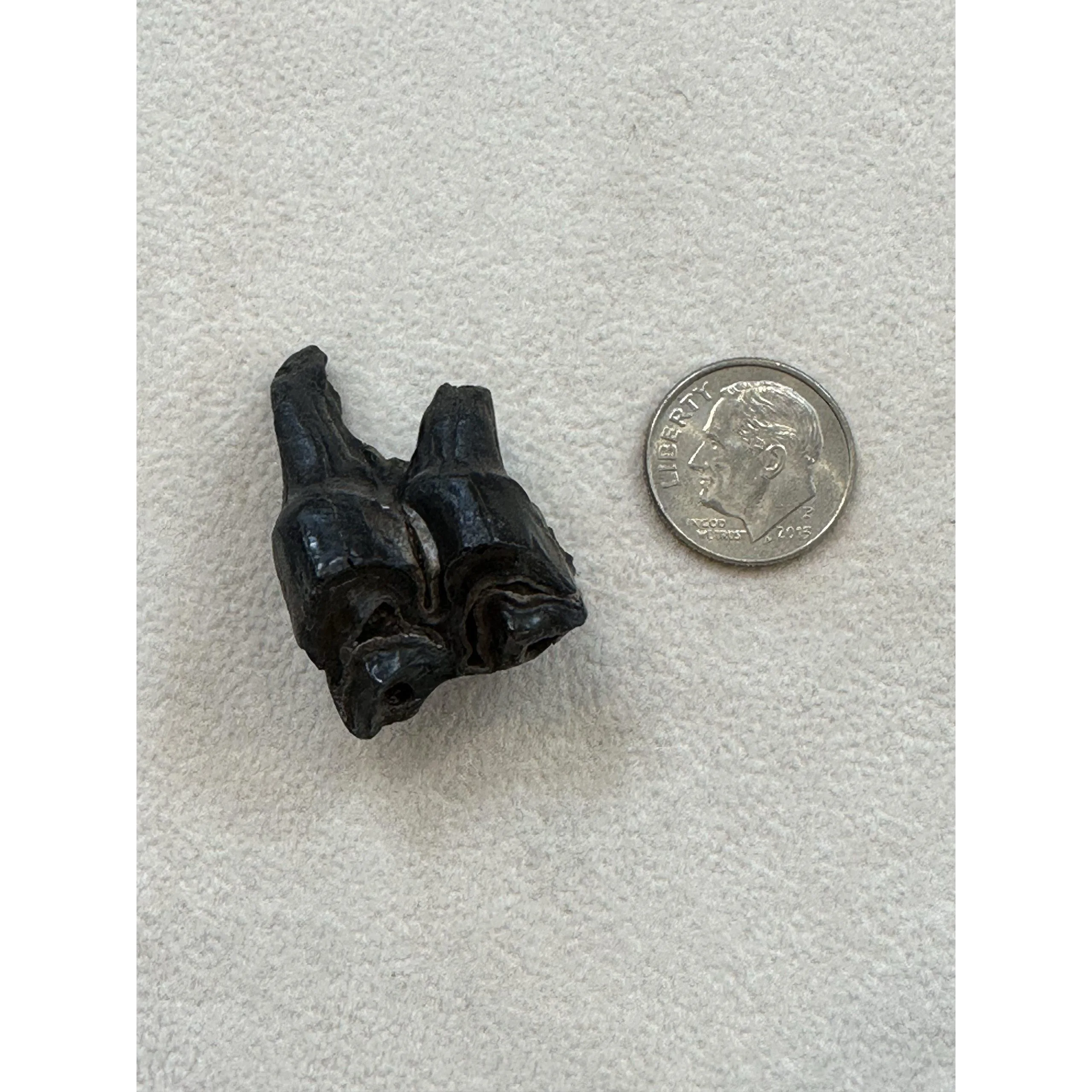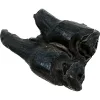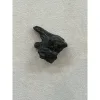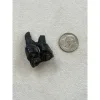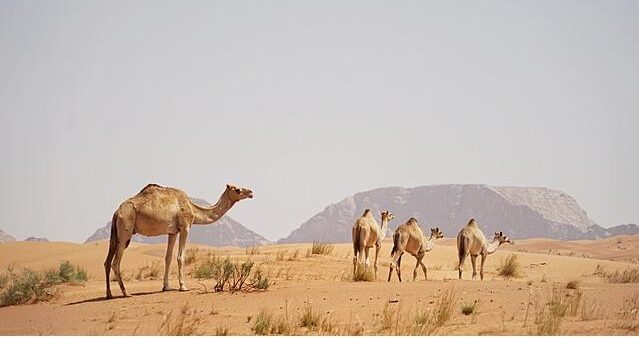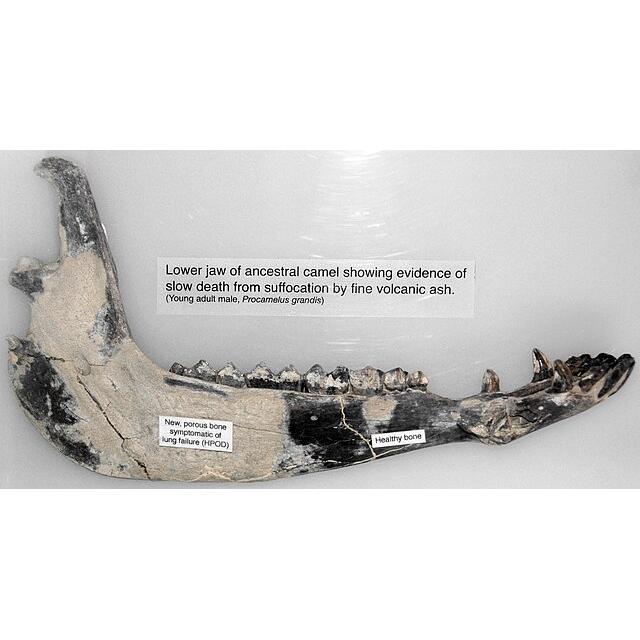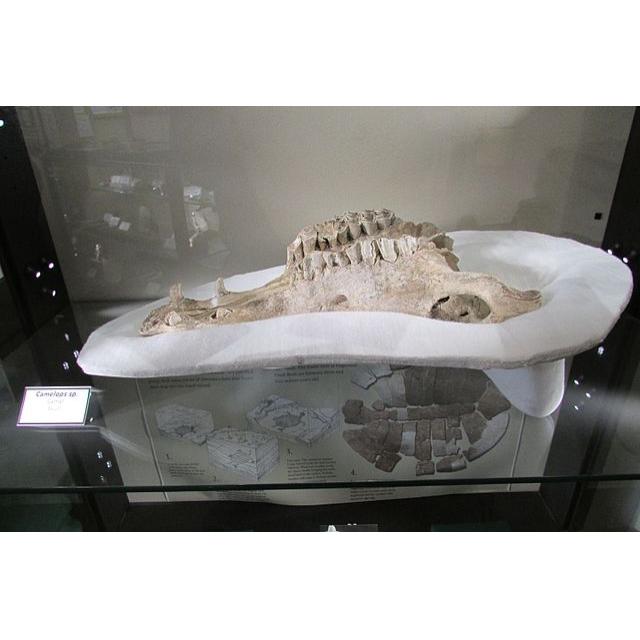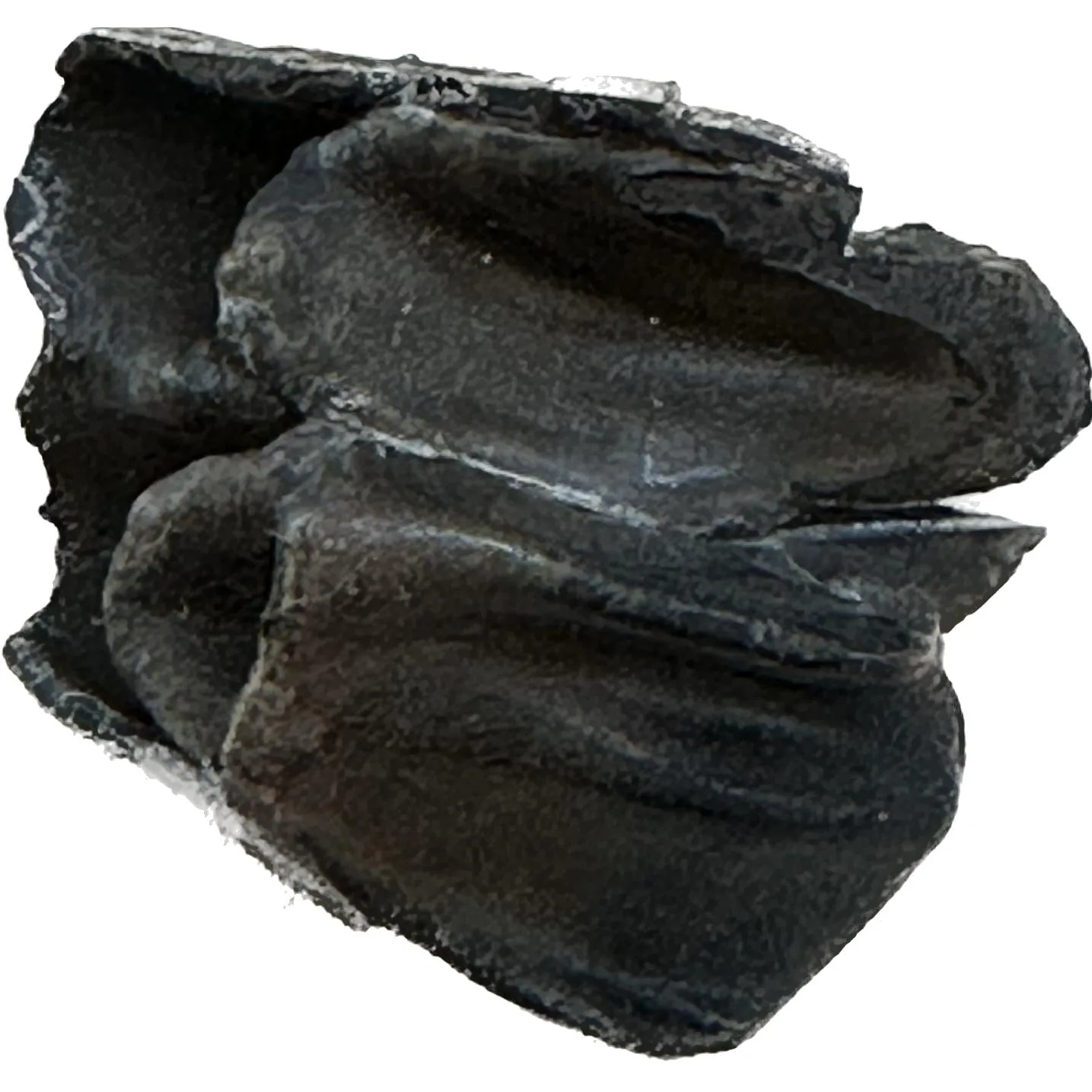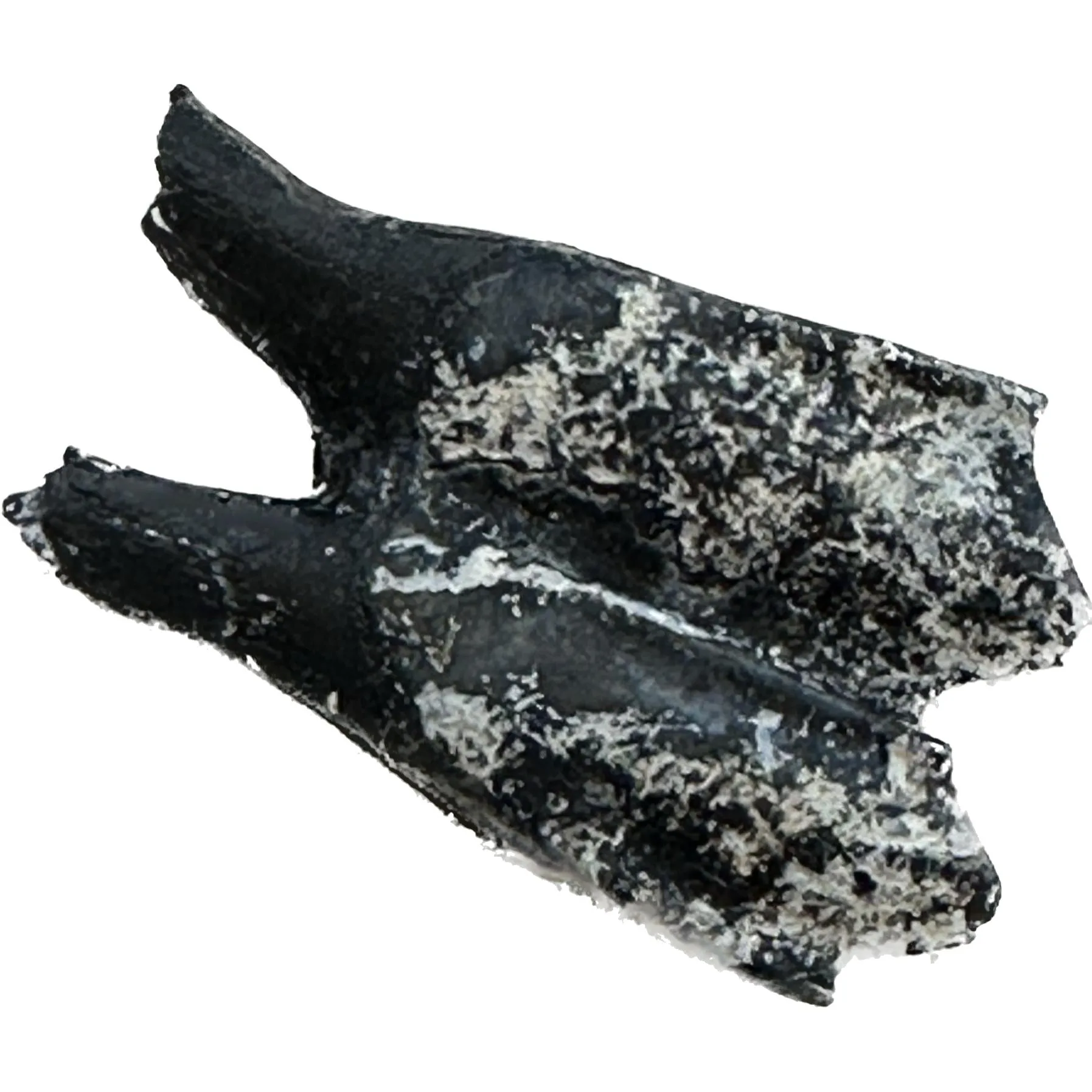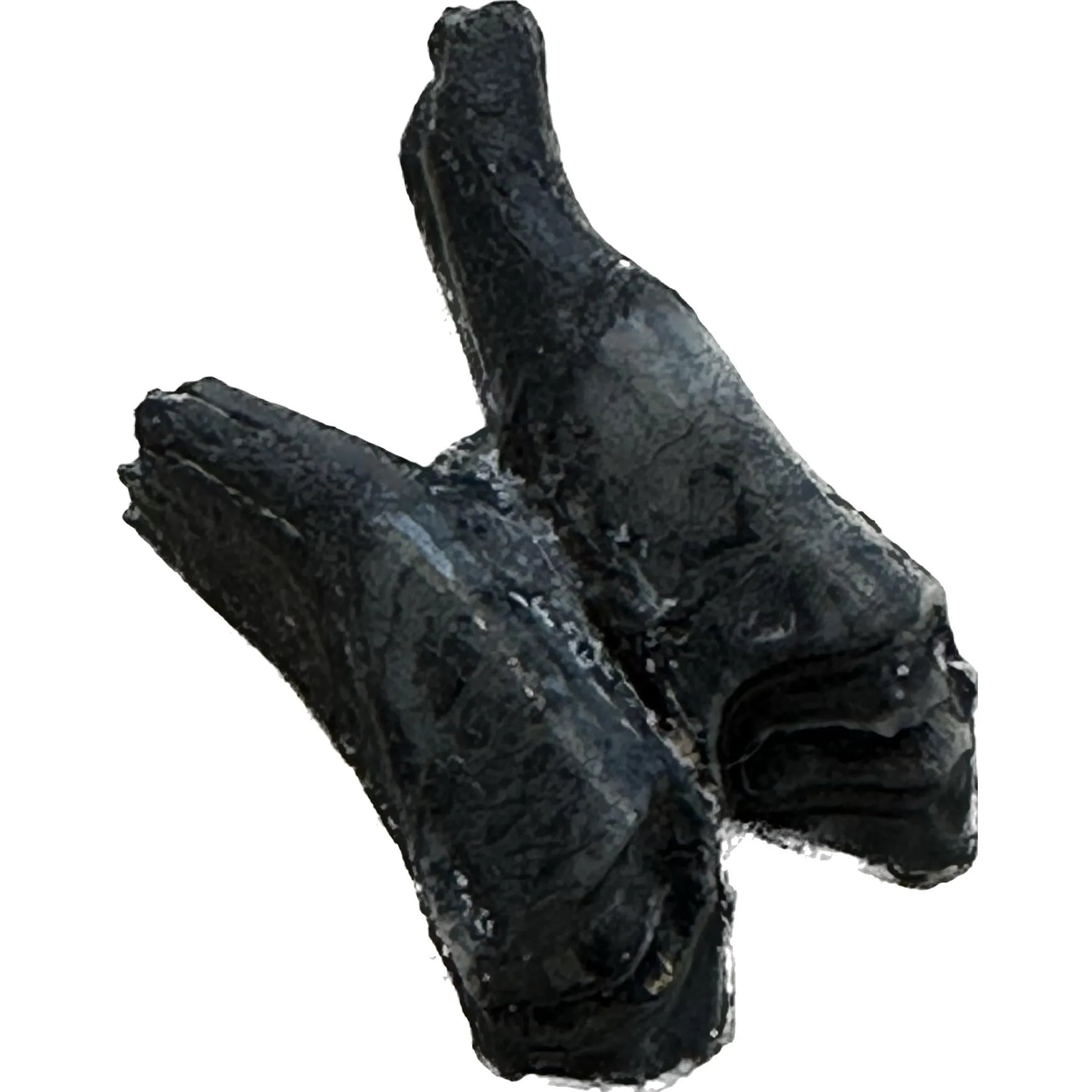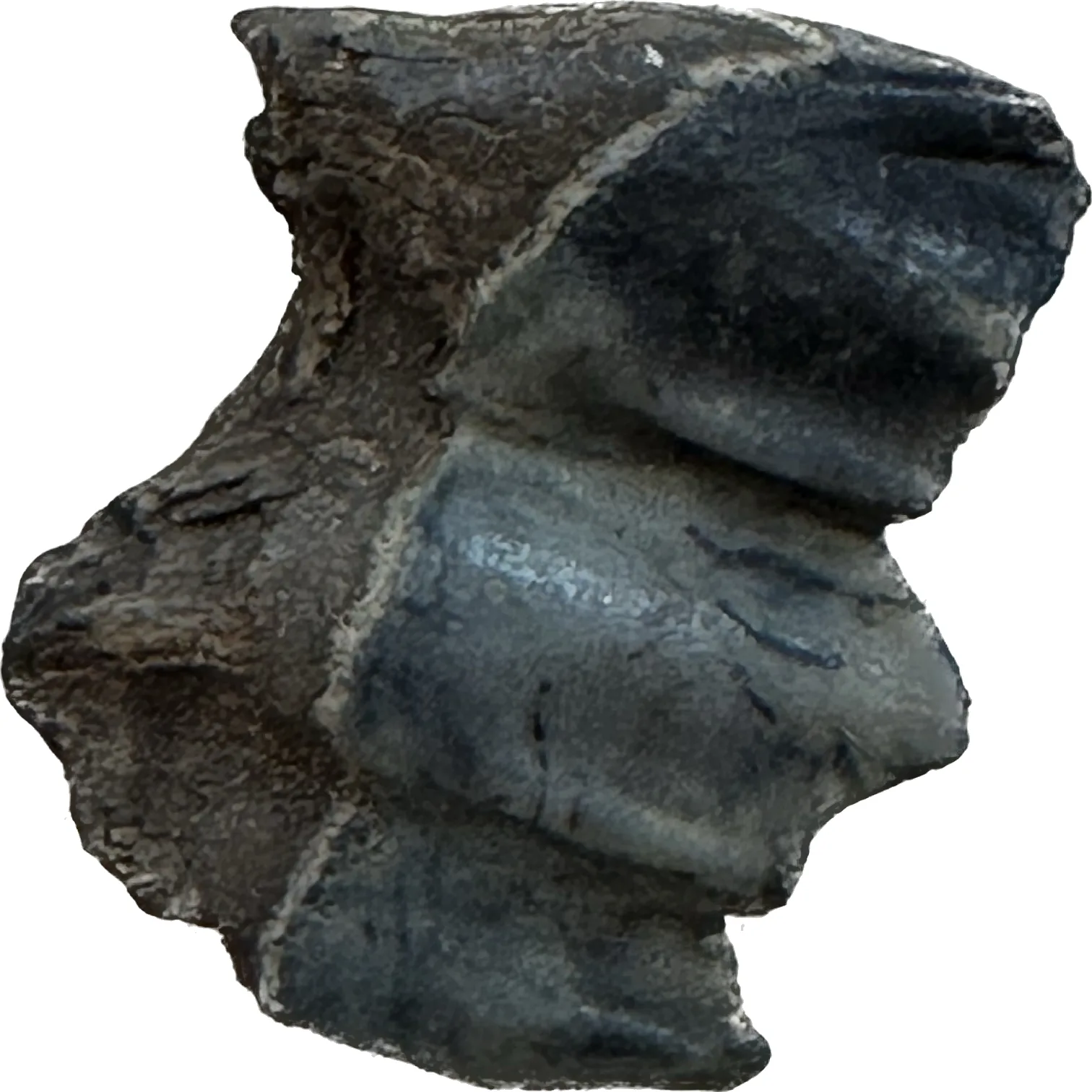Fossil Camel Tooth – Iceage, complete molar
Camels, with their iconic humps and adaptability to harsh environments, have long captured human imagination. But what many might not realize is that these resilient creatures have a rich evolutionary history dating back millions of years. Fossil evidence provides a window into the ancient world of camels, revealing their diverse forms and lifestyles across different epochs and continents.
Origins and Evolution
The story of fossil camels begins around 45 million years ago, during the Eocene epoch, in the lush forests of North America. These early ancestors, known as the Protoceratids, were small, deer-sized creatures with no humps and multiple toes on each foot. Over time, as climates changed and habitats shifted, camels underwent significant evolutionary transformations.
By the Oligocene epoch, around 34 million years ago, camels had diversified into various genera and species. One of the most notable was Protylopus, often considered the earliest true camel. It possessed some camel-like features, such as a reduced number of toes and a more elongated skull, but still retained characteristics of its ancient ancestors.
Migration and Adaptation
As the Earth underwent further changes, including the emergence of vast deserts and grasslands, camels embarked on a journey of migration and adaptation. They spread from their North American origins to other parts of the world, including Asia, Africa, and eventually, South America.
Fossil evidence from different regions provides insights into how camels adapted to diverse environments. In the arid landscapes of Asia and Africa, where water was scarce, camels evolved unique physiological features to survive long periods without drinking. Their humps, for example, store fat reserves that can be utilized during times of scarcity, while specialized kidneys help conserve water.
Ice Age Giants
During the Pleistocene epoch, roughly 2.6 million to 11,700 years ago, camels experienced another phase of diversification and expansion. This period, known as the Ice Age, saw the emergence of larger camel species, often referred to as the “Ice Age giants.”
Among these giants was the extinct genus Camelops, which roamed North America during the Pleistocene. Camelops stood around 3 meters tall and possessed long legs adapted for swift movement across open landscapes. Fossil remains of Camelops have been discovered in various locations across the continent, providing valuable clues about their anatomy, behavior, and interactions with other Ice Age fauna.
Fossil Discoveries and Insights
The study of fossil camels has been greatly enriched by significant discoveries over the years. Paleontologists have unearthed complete skeletons, fossilized footprints, and even mummified remains, offering a glimpse into the lives of these ancient creatures.
In addition to physical remains, advances in scientific techniques, such as molecular biology and isotopic analysis, have enabled researchers to unravel the genetic and dietary secrets of fossil camels. By studying ancient DNA and analyzing isotopic signatures in fossilized teeth, scientists can reconstruct evolutionary relationships and dietary preferences with unprecedented precision.
Conservation and Future Perspectives
While fossil camels have long vanished from many parts of the world, their modern descendants continue to thrive in various habitats, from the deserts of Arabia to the grasslands of Mongolia. However, these iconic animals face numerous threats, including habitat loss, climate change, and poaching.

Efforts to conserve wild camel populations and their remaining habitats are crucial for ensuring their survival in the face of these challenges. By studying the evolutionary history of camels through fossils, we gain valuable insights into their past adaptations and resilience, providing a foundation for their conservation in the present and future.
The study of fossil camels offers a fascinating journey through time, revealing the evolutionary processes and ecological dynamics that shaped these remarkable creatures. From their humble beginnings in ancient forests to their emergence as Ice Age giants, camels have left an indelible mark on the history of life on Earth.
As we continue to explore and uncover the secrets of the fossil record, our understanding of camels’ past, present, and future will undoubtedly deepen. Through interdisciplinary research and conservation efforts, we can ensure that these iconic animals continue to inspire awe and wonder for generations to come.
Prehistoric 101 (Learn about fossils, minerals, and meteorites)

